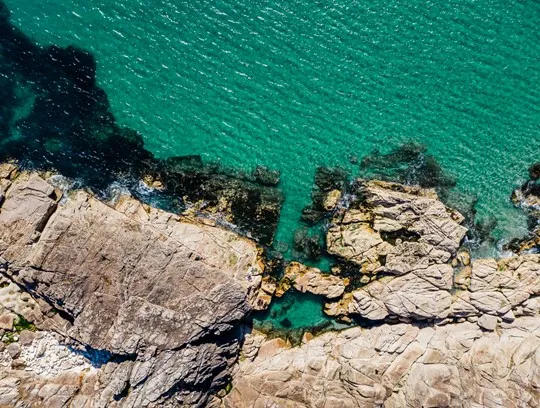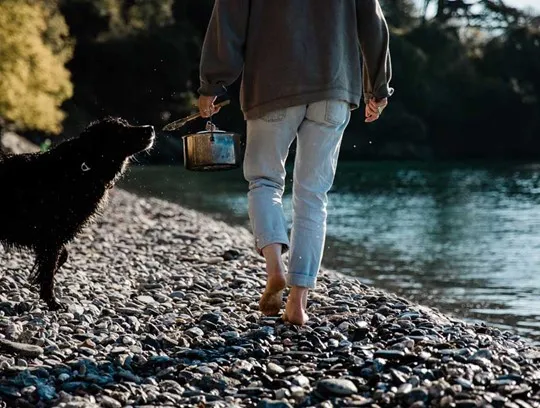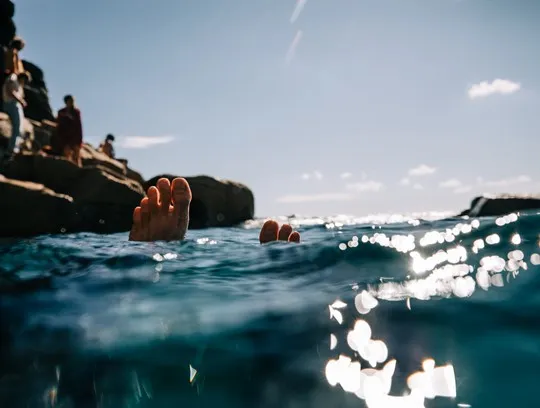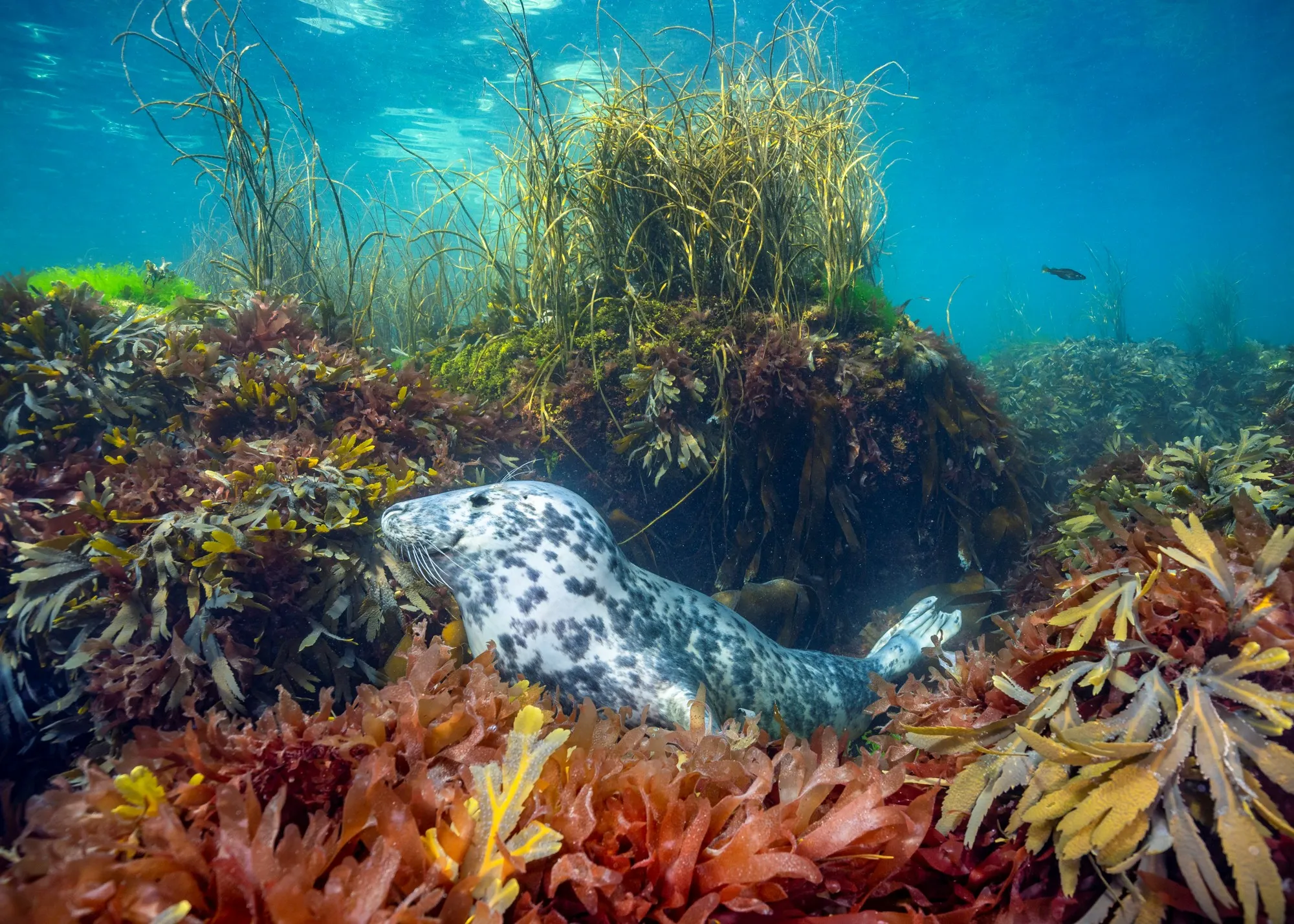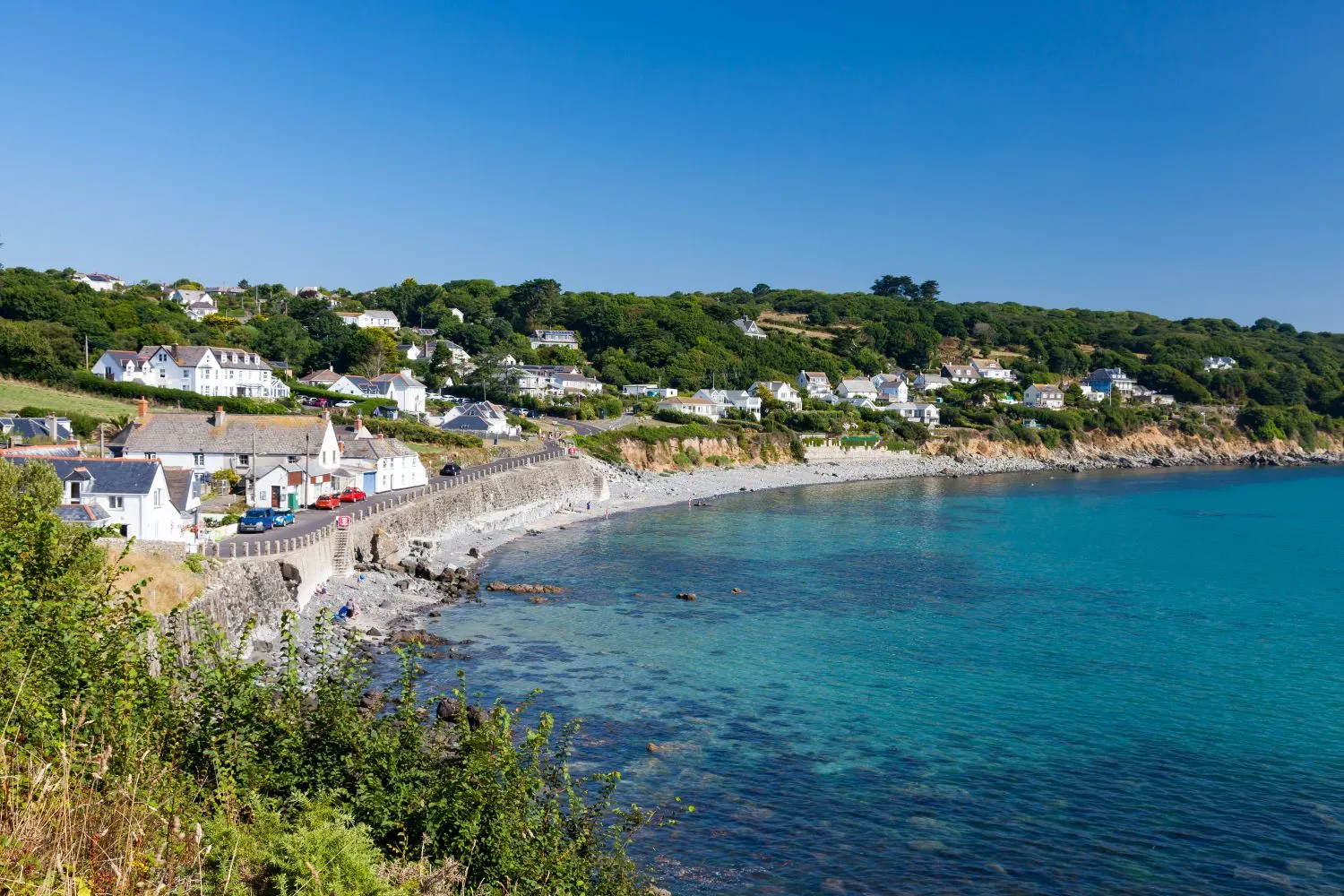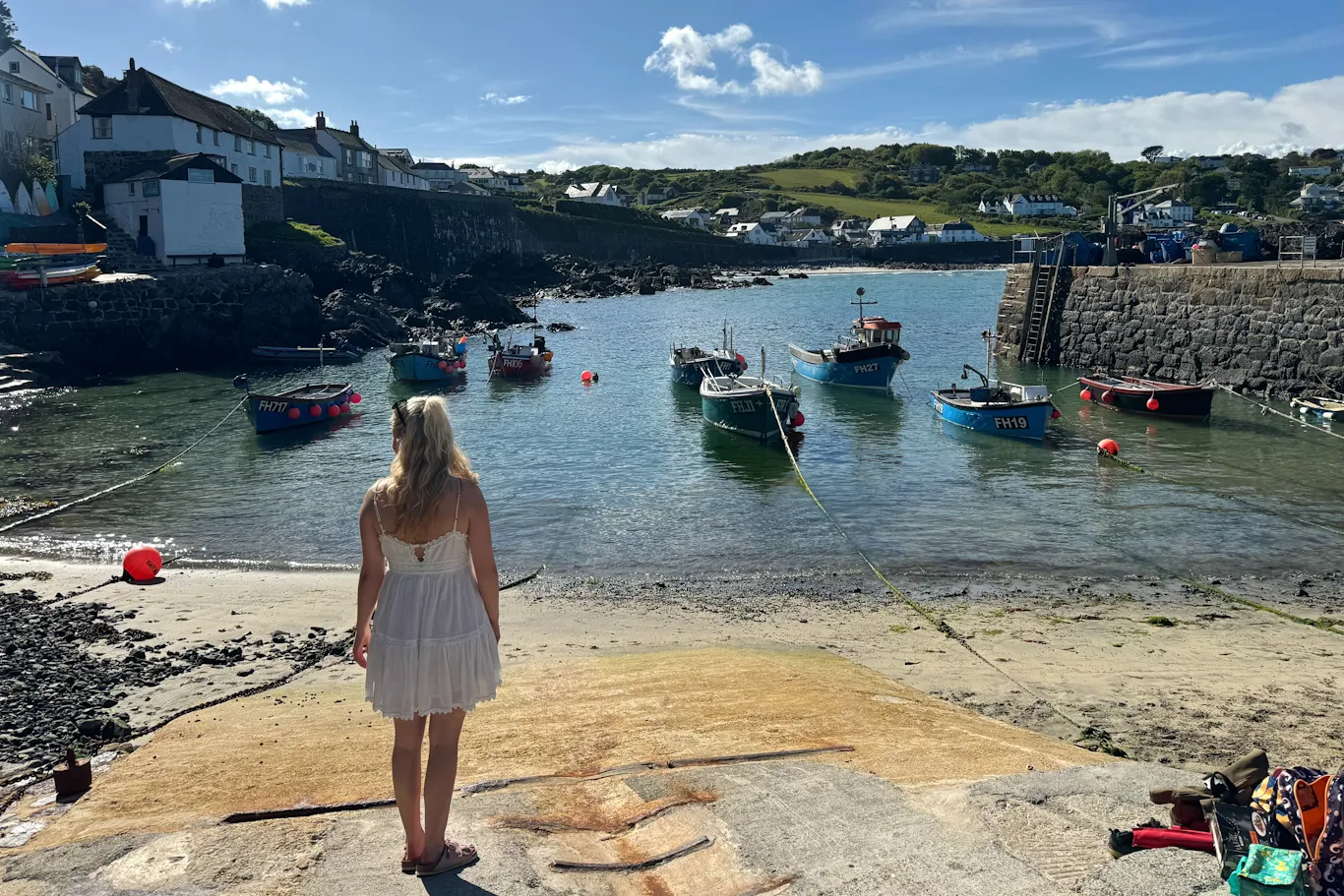Home / Stargazing rituals by the sea
Stargazing rituals by the sea
18th September 2024
Our ancestors found wonder and reassurance in the night sky, creating places for stargazing rituals that you can uncover across Cornwall. We went in search of celestial coastal wonder with the help of local astronomer Carolyn Kennett.
Life can be uncertain, but looking up at the night sky might offer us a sense of stability: the unchanged Orion’s Belt, the Big Dipper still staring back at us with its bear-like eyes, and the twin figures of Gemini stretching out their arms towards us.
The sky has more or less looked the same for thousands of years, but if we look further the stars are always moving. One day, albeit in a few million years, the night sky will look nothing like it does today.
It’s possible ancient civilisations found wonder in the sky’s movements and part of the reason they dedicated so much time to stargazing and built monuments to the night sky. The remains of these monuments can be found across Cornwall, giving clues to the rituals of the past, while the clear, dark skies by the coast offer plenty of scope to create your own stargazing rituals on holiday.
Visiting with a large group? Discover our large holiday homes perfect for big families or friend groups.
Astronomical tales
Local astronomer, Carolyn Kennett, is well acquainted with Cornwall’s rich astronomical history, and has her own rituals for the region’s star-spotting sites.
“We’ve moved away and lost our connection to the night sky; we forget to look up to see what’s going on,” she says. Creating this deep connection to the stars was always an important part of our ancestors’ lives.
“It’s widely known as a place of ceremony and ritual with strong alignments with the rising and setting of the sun.”
From visiting ancient astronomical sites to sharing folk tales to simply watching stars glide past you in the dark, Carolyn’s tours bring this connection to life. “When you see the Bronze Age monuments from about four thousand years ago, that’s when things get interesting,” she says.
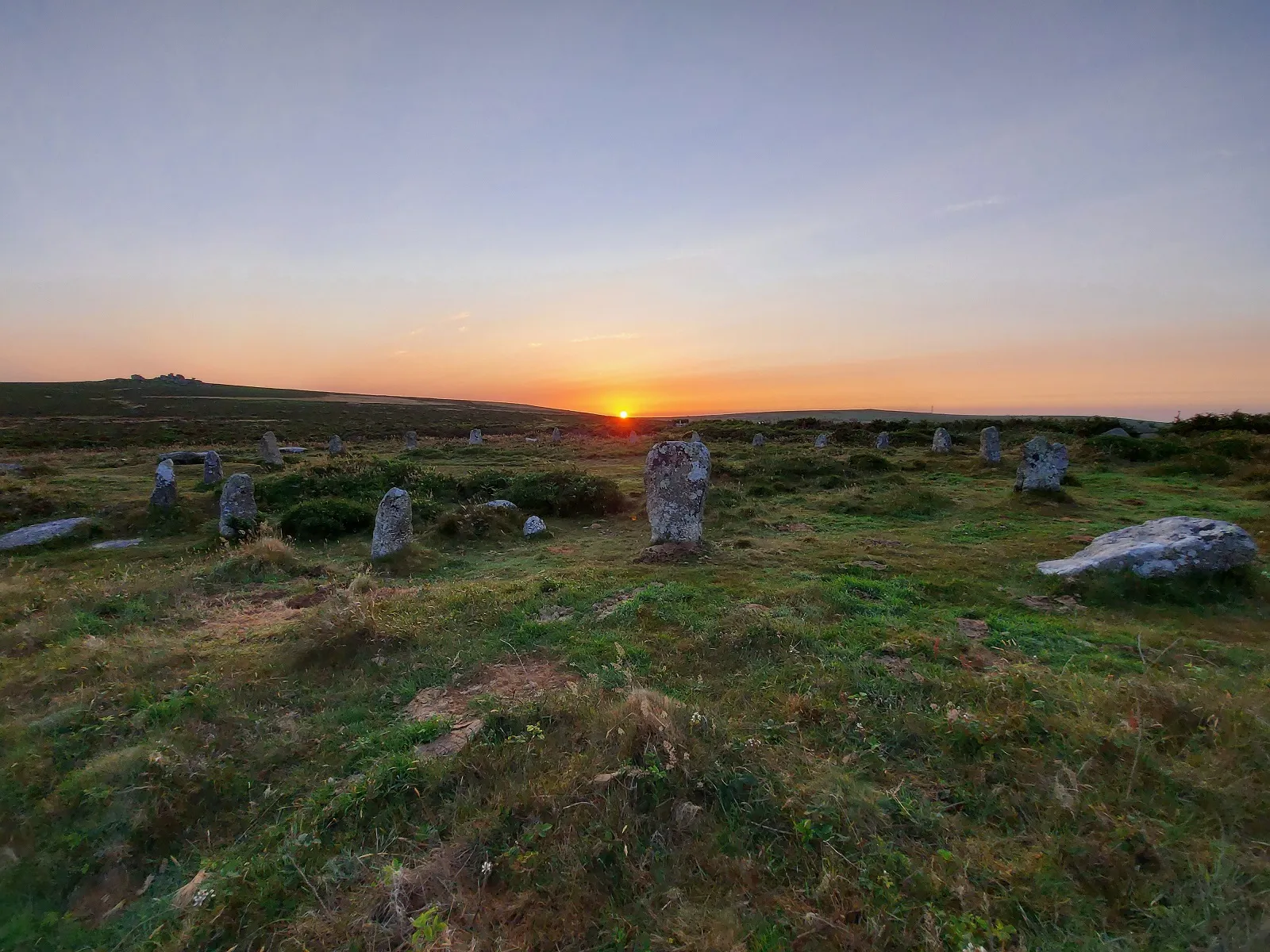 Tregeseal Stone Circle (Credit: Carolyn Kennett)
Tregeseal Stone Circle (Credit: Carolyn Kennett)
One of the most inspiring spots is at the Penwith Dark Skies Park, West Cornwall. From a stay in westerly properties such as Stella Maris or Sea Salt Sennen, travel through time, to Tregeseal Stone Circle (or The Dancing Stones) a Neolithic Bronze Age monument of nineteen stones.
It’s widely known as a place of ceremony and ritual with strong alignments with the rising and setting of the sun. It’s one of the stargazing tours Carolyn takes travellers on, a magical place to explore in autumn and winter.
Autumnal astronomy
Whether in the steps of ancient settlers or at your own choice of coastal dark sky lookout, one of the first starry delights to spot this season is the Orionid meteor shower. Catch this comet as it passes around the sun, lighting-up the rock and dust that trails it, between 2 October – 7 November.
“The best chance to seize both these celestial moments is from a place with little light pollution and a clear horizon like the cliff tops.”
The month of November has even more in store. The Cornwall Astronomy Society Meeting & Stargazing will meet on 12th November to talk under the stars and see what the November sky holds. It isn’t by chance that a beaver moon (which could turn out to be a red blood moon) will appear the same night.
It’s one of the most breathtaking events of the celestial calendar when the moon turns a red colour as it aligns with both the earth and sun in a complete lunar eclipse.
A few days later, between 12th-13th November, the Taurid meteor shower peaks. It’s a key autumn event with the meteors passing by slowly, creating a long-lasting twinkling in the night sky. You don’t need a telescope or binoculars – simply your eyes to look up and absorb the shining expanse above you.
The best chance to seize both these celestial moments is from a place with little light pollution and a clear horizon like the cliff tops.
With clifftop views out to sea, retreats like Iona in Porthcothan or Skyline and Karn Havos in Mawgan Porth, offer clear night-time horizons on the doorstep.
Fancy staying in Mawgan Porth? Have a look at our Mawgan Porth holiday properties.
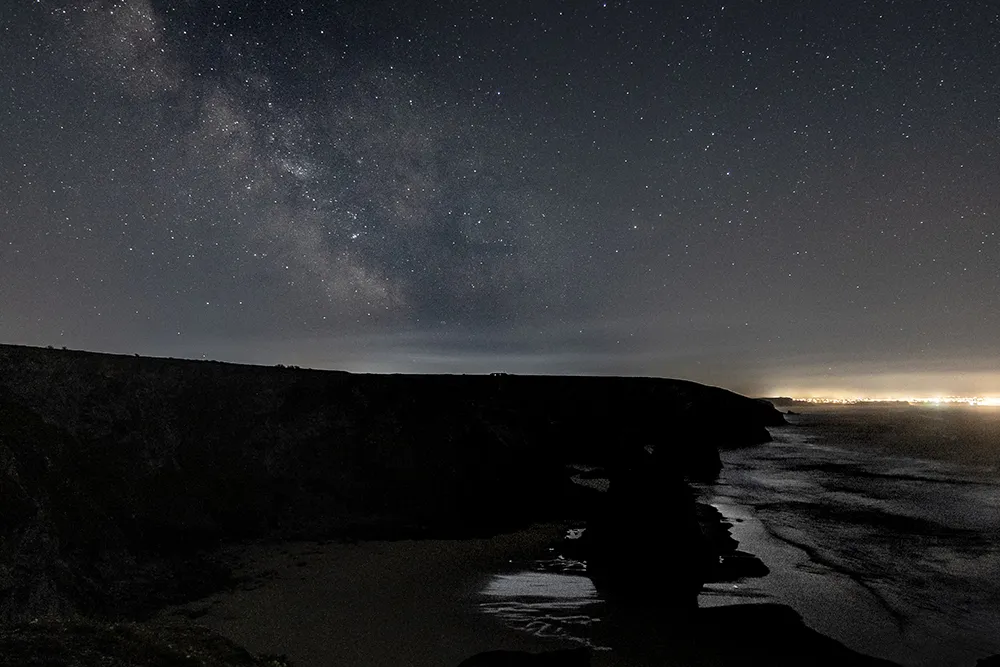
Credit: Graham Gaunt Photowork
Solstice skies
With December comes the winter solstice, the shortest day of the year on the 21st of the month and a long-standing time of celebration in many cultures, past and present.
An ancient Cornish monument with celestial connection is Hurlers Stone Circle, created in the early Bronze Age. This ceremonial circle was orientated towards the location of the stars that form Orion’s belt when it was made and it still stands in Bodmin Moor’s Dark Skies Park. It could be the perfect spot for stargazing on the winter solstice.
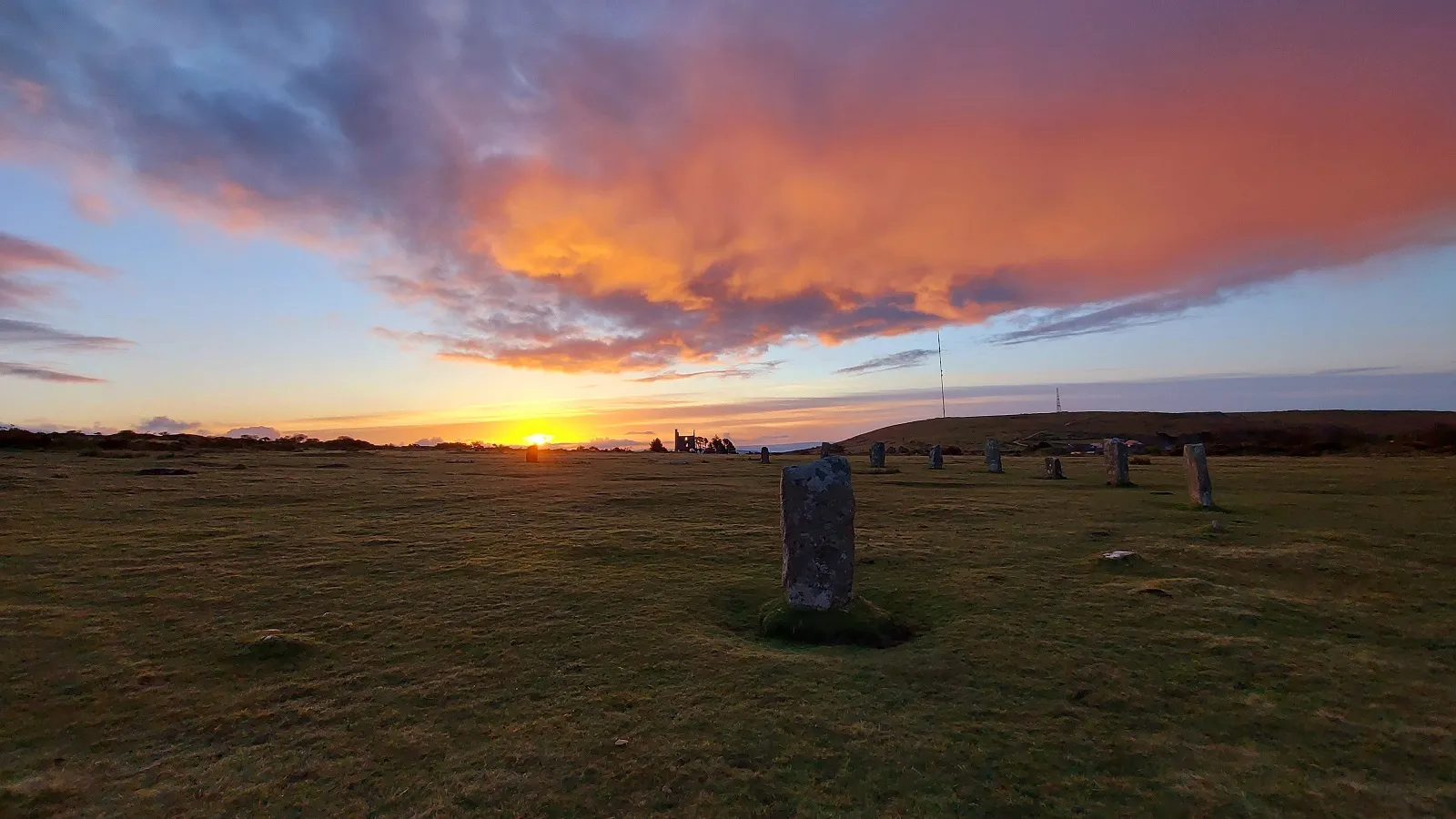
Hurlers Stone Circle at sunrise (Credit: Carolyn Kennett)
Wherever you find yourself in Cornwall, there’s a universe of astronomical sights to see. Experience these wonders in your own stargazing ritual by the coast or discover the dark sky places of our ancestors.
Explore the beauty of new traditions with our guide, inviting you to embrace fresh experiences and create lasting memories along the Cornish coast.
